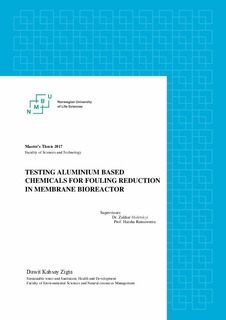| dc.description.abstract | The need for the environment, water and soil protection from human-induced pollutions are increasing from day to day. Improper sanitation and uncontrolled waste discharge are among the main sources of pollutants, which made the decentralized wastewater treatment industries solution as same time source of pollutants. Hence, environmental and economic sustainability are the two factors among many that sustainability of wastewater treatment plants (WWTP) are being evaluated through in recent days. Wastewater contains nutrient pollutants such as organic matter, nitrogen, and phosphorus. Disposal of these contaminants in an uncontrolled manner causes environmental pollution like eutrophication and enhance watercolor development.
To protect the environment from the adverse effect of urban wastewater discharge, urban wastewater directives set stringent standards on discharges quality from WWTPs. The need to meet the quality standards and the enquiry to challenge the water scarcity has led to development of innovative technologies like MBR and MBBR that are generally used in water management sectors. Treatment of used water for reuse involves several process among which the continuously evolving membrane filtration. Membranes such as MBR provides a combination of biological treatment and membrane separation. Membrane bioreactor has significantly contribute to the production of high quality effluent, reduced sludge yield, and effective retention of biomass. The MBR is applied for direct filtration in an activated sludge waste treatment that normally contains suspended particles, colloids and solutes. Thus, MBR is used to perform the critical solid-liquid separation eliminating the need for a secondary clarifier. However, the interaction between the feed material and the membrane causes fouling of the membrane restraining the wider application of the technology. Fouling results as a consequence to precipitation of suspended or dissolved substances on the membrane surface and at the pores of the membrane. Consequently, it reduces membrane performance and productivity, increased energy consumption, membrane cleaning, and use of reagents decreasing economic feasibility of the MBR.
The main purpose of this experimental study was, to physically validate the analytical predictions of using aluminum-based coagulation as fouling reducer in submerged membrane biological reactor. Therefore, membrane fouling reduction through charge driven interaction using Al2 (SO4)3, was studied and compared with results of PAX-18 and PAX XL-61. Improvement on filterability of mixed liquor due to the Influence on the properties of mixed liquor solid were assessed through the change in Zeta potential, Turbidity, floc size and hydrophobicity after coagulant addition. Accordingly, it was found that at lower ranges of concentration Alum enhanced the filterability of the mixed liquor better than the polymers. It could be explained that monomeric aluminum enhanced the charge counter balancing, floc size and hydrophobicity better at pH 4-6 and dosing 1.6 mM Al. g-1 MLSS. As the experimental investigation revealed the chemicals can be ranked Al2 (SO4)3, PAX-18 and PAX XL-61 in order of their effect on membrane fouling in the given range of dosing. | nb_NO |

